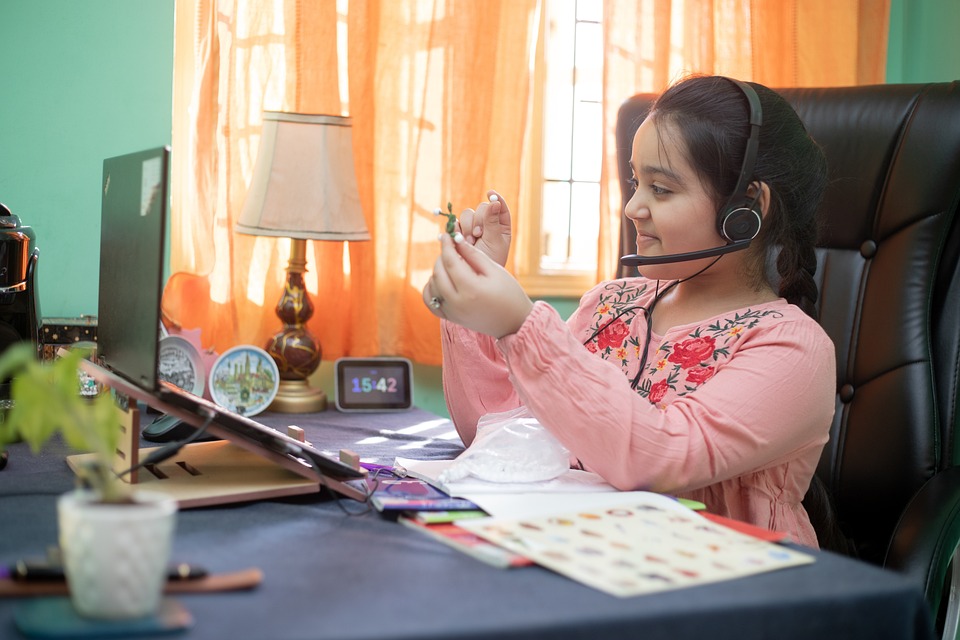Description: In this article, EFL and experienced Online tutor Martha, shares her ideas on how to keep young students engaged during online lessons.
The Rise of Online Learning
In recent years, the education landscape has undergone a dramatic shift towards online learning.
This has been accelerated by the COVID-19 pandemic. It forced schools and universities to close and turn to remote teaching methods.
The world of Teaching English as a Second or Foreign Language has often utilised online teaching.
It provides a level of flexibility and freedom and fulfils the need for a global audience.
Although a format utilised for some time, teaching ESL online presents unique challenges.

When studying to teach English as a Second Language, we teachers learn the ins and outs of grammar, how to effectively lesson plan and develop techniques on how to ensure our students learn effectively.
However, when it comes to teaching online, there are other factors that we need to consider, such as the technology we use, the online learning platform, and, perhaps most importantly, how to keep our students engaged.
Different Methods
Keeping students engaged is one of the most significant learning curves I have come across in my online teaching career, as it can be challenging to keep students focused and interested when they are not in the same room as you.
As online ESL teaching has been around for a while, there are lots of fantastic videos online and a lot of resources that offer advice and assistance in keeping your students engaged.
Many new and veteran teachers turn to props and other visual aids to help keep their students engaged.
Props are often considered a vital aspect of online ESL teaching, as they can keep the younger children looking at you, engaged and creatively stimulated.
Whilst they can be helpful resources, props do not always work. Some children feel embarrassed or patronised, as their knowledge can be high even if they are young.
Props can even confuse your own teaching, as you may rely on them too much or find them a distraction.
Ultimately, what I have found is that young students must first be considered as children.
You must look beyond the small boxes on the screen that show their face and see the child.
Young students will relax and trust you as a teacher if you are willing to laugh at yourself, have fun and treat them as children that are there to learn.
4 Top Tips
So, what can you do to keep your students engaged during online ESL classes? Here are some of my thoughts:
- Don’t take yourself too seriously and make it fun!
It is important that our students learn, but the students will not learn if they feel tense or bored in the lesson.
Kids learn best when they are having fun, so don’t be afraid to make silly faces, use funny voices, or do big motions.
Students will laugh with you, and then return to the learning feeling refreshed and engaged.
2. Get the children up and moving
Children have a lot of energy, and they need to burn it off.
Incorporating movement into your lessons can help keep them engaged and focused.
This could be a warm-up game where they have to bring you things in their room beginning with a certain letter or of a specific colour.
3. Surprise them in the middle of the lesson with a fun game
Kids love surprises, and a fun game in the middle of a lesson can help keep them engaged.

It doesn’t have to be complicated, but something that can be played online or through video conferencing.
Any games, no matter how silly or simple will have them speaking in English, practising the language in a different way and with a different type of concentration.
If you are teaching multiple students, have them compete!
4. Get to know your students
Starting the lesson off by getting to know your students is a great way to build rapport with them.
Find out their favourite colour, sport, or activity, and then theme your lessons around it.
They will feel valued, excited and listened to, and as they are young, sometimes are excited just to see their name written in their favourite colour!
Final Note
Ultimately, teaching young students online can present a unique set of challenges, but it is important to remember that at their core, they are simply children.
By approaching teaching young students online with a focus on fun, laughter, positive reinforcement, and challenging homework, we can create an environment where our students feel comfortable and engaged, ultimately leading to a greater quality of learning.
As online teaching continues to play an increasingly important role in education, it is vital that we approach it with a child-centric mindset and a willingness to adapt and grow alongside our students.
By tutor Martha. Contact Us




